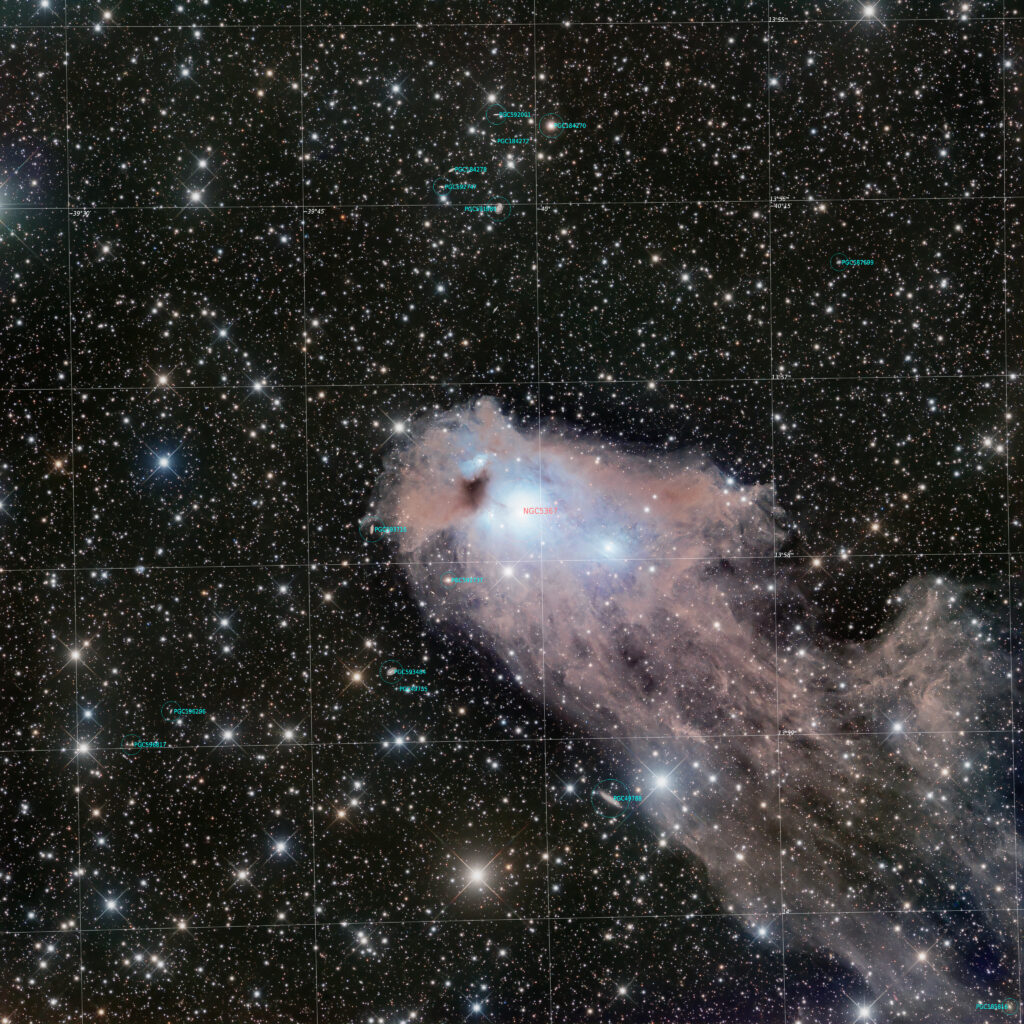NGC 5367 (IC 4347) and CG12 region in LRGB

Astrobin : https://www.astrobin.com/uggz1f/B/

NGC 5367, also catalogued as IC 4347, a Reflection Nebula in Centaurus, lighted from two bluish components of the binary system h4636 from spectral type B4 and B7.
Nebula is associated with the cometary globule CG12, extending from bottom center to the upper right for more than 1°: dicovered in 1976 on an ESO/SRC Sky Survey plate taken with the UK Schmidt telescope, CG12 is in contrast to the most other Cometary Globules, because it is far away from the galactic disk by latitude as more than 21°.
Cfr.: https://www.irida-observatory.org/Namibia-Tivoli/NGC5367/NGC5367.htm

A strong IRAS point source and a highly collimated outflow indicate that star formation is still going on. The head of the globule has been observed using NIR imaging (NTT sofi), mm continuum (SEST Simba) and sub mm (APEX) and mm (SEST) spectroscopy.
The molecular material is distributed in a 10′ North-South elongated lane with two compact maxima separated by 3′. Strong C^18O (3-2), (2-1) and (1-0) emission is detected in both maxima and both have an associated compact 1.2 mm continuum source.
The Northern core, CG 12 N, is cold and is possibly still pre-stellar. A stellar source with a NIR reflection nebulosity is observed near CG 12 N.
The observed C^18O line ratios are similar to those observed in Class 0 sources.
A remarkable C^18O (3-2) hot spot is detected in the direction of the Southern core, CG 12 S. It lies at the edge of a dense cloud core detected both in high density tracers (CS (3-2), H^13CO^+ (1-0) and DCO^+(2-1)) and in the 1.2 mm continuum.
The hot spot also lies on the axis of a highly collimated bipolar molecular outflow with a driving source most probably embedded in the dense core. This is the first detection of such a compact, warm object in a low mass star forming region.
NIR imaging reveals a bright cone-like feature with a faint counter cone in the centre of CG 12 S. The total mass (> 100 M[sun]) and the linear size of the CG 12 head (~3 pc) are similar to those of other nearby low mass star forming regions.
Even though the most evolved stars in CG 12 lie already on ZAMS the cloud contains also proto-stellar sources and a pre-stellar core.
Cfr.: https://ui.adsabs.harvard.edu/abs/2007IAUS..237..420H/abstract
Lascia un commento